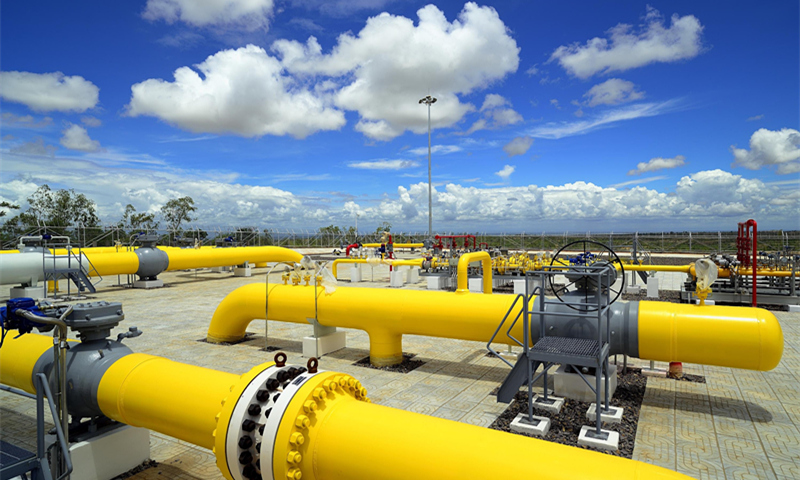Natural gas accounts for 32% of energy use in Beijing
By Wang Sheng Source: Global Times Published: 2020/11/8 17:18:41

A gas station along the China-Myanmar crude oil and gas pipeline in Yenangyaung, Myanmar on June 5, 2013 Photo: VCG
China's capital city Beijing has expanded use of natural gas to account for 32 percent of its energy mix, becoming the second largest natural gas-consuming city in the world, PetroChina Beijing Gas Pipeline Co told reporters.
This is the highest level of natural gas used in a Chinese city, in contrast with the approximate 10 percent of natural gas used in China's total energy mix, effectively reducing air pollutants such as Particulate Matter (PM2.5).
As of the end of October, Beijing has consumed about 173.54 billion cubic meters of natural gas, equivalent to 200 million tons of coal, the company said.
Beijing Gas Pipeline Co has transmitted 442.03 billion cubic meters of natural gas, equivalent to 520 million tons of standard coal, providing natural gas to Beijing and its neighboring cities, according to the company.
Beijing's natural gas comes mainly from Northwest China's Xinjiang Uygur Autonomous Region and Central Asia countries, transported via the Shaan-Jing natural gas pipeline, which is connected to the China-Central Asia natural gas pipeline, managers at the company said, adding that 95 percent of Beijing's natural gas is transmitted by the Shaan-Jing natural gas pipeline.
"Transmission capacity for the Shann-Jing natural gas pipeline system has increased to 58 billion cubic meters per year with 25 billion cubic meters of peak shaving storage capacity," Zhang Liya, deputy general manager of the company said.
LNG (liquefied natural gas), which also plays an important role in guaranteeing the supply of natural gas in Beijing, is unloaded at the Tangshan LNG terminal in Beijing's neighboring Tangshan, North China's Hebei Province.
Natural gas from Russia's Western Siberia, via the China-Russia east-route natural gas pipeline that is expected to provide 38 billion cubic meters of natural gas from 2024, will also be transmitted to Beijing, which will further diversify natural gas supplies, managers at the company told Global Times.
In recent years, Chinese pipeline companies have proactively expanded natural gas transmission capacity and diversified gas suppliers, as demand for natural gas is surging due to continuous coal-to-gas switchover projects.
Thanks to diversified supplies and boosted transmission and storage capacity, the price of natural gas has been relatively stable in recent years, in contrast with the reported price of imported LNG, skyrocketing 100 percent to $10/MMBtu in the winter of 2017.
JKM, the benchmark for prices in Northeast Asia, came to around $6/MMBtu for December delivery this year, higher than several months ago, but stable levels when compared with the same period last year, according to market information provider S&P Global Platts, as many cities in China have entered this year's winter heating period, driving gas demand up.
"From the point of view of consumption, Beijing's natural gas use in 2020 is expected to be the same or less than that of last year, impacted by the outbreak of COVID-19," Cheng Fei, deputy director of a gas transmission station of the company told Global Times, adding that 2021's natural gas use will see year-on-year growth.
However, China's total apparent consumption of natural gas reached 230.95 billion cubic meters in the first three quarters, up 3.6 percent year-on-year, according to China's top economic planner, the National Development and Reform Commission, showing strong momentum for natural gas demand.
Aside from proactively guaranteeing the consumption of natural gas in Beijing this year, PetroChina Beijing Gas Pipeline also enhances the interconnectivity of gas transmission and provides natural gas to Tianjin city and Hebei Province.
"As the 2022 Winter Olympics is scheduled to take place in Beijing and towns in the neighboring Hebei Province, we are providing clean energy for the region and contributing to the launch of the Green Olympics," said Wu Ying, secretary of Discipline Inspection Commission at the company.
Posted in: INDUSTRIES